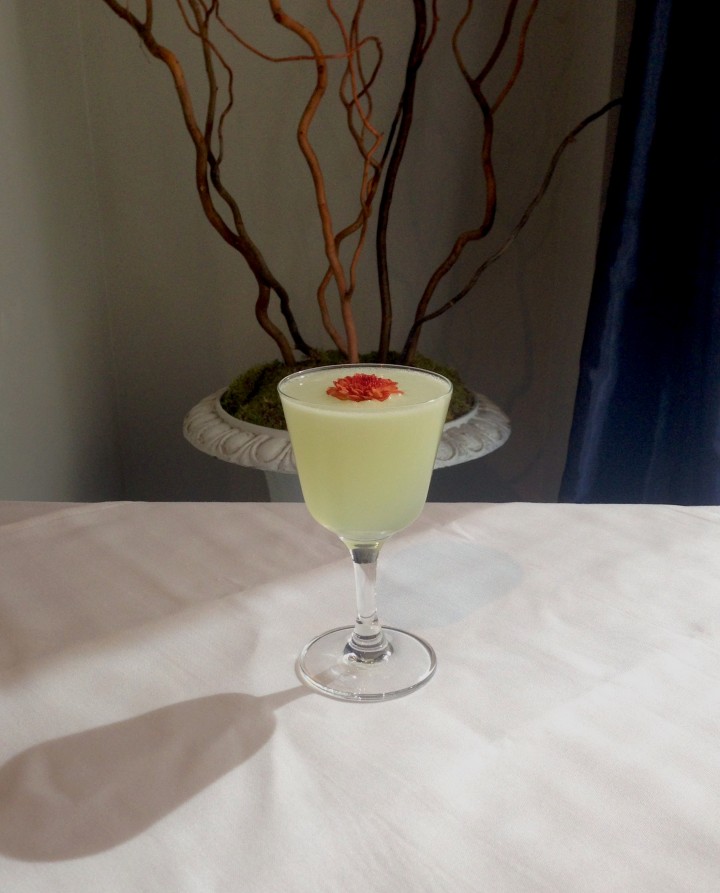
In August 2013, two New York City-based entrepreneurs launched Owl’s Brew, an artisanal tea specifically designed for mixing with cocktails. The bottled offering is a natural evolution for tea, which has become an increasingly popular cocktail ingredient in bars and restaurants nationwide.
“We were having incredible cocktails in New York City, but they were all either really heavy or really sugary, and it was hard to have more than one,” says Owl’s Brew cofounder Maria Littlefield. “We realized that tea is an amazing complement to a spirit. Instead of covering up a spirit’s flavor, we found that the flavor itself was enhanced.” Those synergies led to the creation of Owl’s Brew. “We looked at different taste profiles and added spice and tartness,” Littlefield explains. “They’re designed to pair with spirits, not to be consumed alone.”
Owl’s Brew teas ($16.99 a 32-ounce bottle) are all fresh-brewed and bottled, and each of the three offerings pairs well with different spirits. The Classic, made with English breakfast tea, lemon peel, lemon and lime, works with vodka and gin, as well as with Shandies and sangria. The Pink & Black, made with Darjeeling tea, hibiscus, strawberry and lemon peel, complements gin and Bourbon, and the Cocolada—a blend of black tea, coconut, chai spices and pineapple—matches with spiced rum, mezcal and even Champagne. This summer, the company launched Owl’s Hour, a promotional program at the bars BFB in New York City and DFM in Los Angeles, featuring five-cent Owl’s Brew cocktails like the Right Swipe, made with rum (brand varies), Pink & Black Owl’s Brew, cilantro and chilis. The brand has also recently launched into food service and hotel accounts. “It’s a great way to put a craft cocktail on the menu without taking six or seven minutes to create each individual drink,” Littlefield explains.
At celebrity chef Bryan Voltaggio’s restaurants Aggio and Range in Washington, D.C., head bartender Dane Nakamura understands the need to make cocktails quickly. The restaurants serve more than 300 guests a night, so Nakamura uses tea to create complex syrups in advance, reducing prep time during service. “Green tea and oolong are capable of stabilizing cocktails that might actually go bad,” he explains. “Instead of having to put together 12 different ingredients, we can break a cocktail down to four or five ingredients because one of those syrups includes the other eight.” The Devil You Knew ($13) comprises Espolón Reposado Tequila, oolong tea, ginger beer, black pepper and a pomegranate syrup that’s prepared in advance from fresh pomegranate juice, green tea, oolong tea, black pepper and lemon peel. “The oolong adds a smoky characteristic that pairs really well with Tequila and mezcal,” Nakamura explains. “Pomegranate and pepper also go well with smoke.” He uses tea in The Urban Conformist ($13), an approachable barrel-aged cocktail made with lemon verbena tea-infused Tito’s Handmade vodka, Bittermens Apricot liqueur, orgeat, lemon juice and Peychaud’s bitters. Both cocktails have been very successful. “The tea cocktails are two of our biggest sellers,” Nakamura notes.
Bill Anderson, head bartender at the restaurant Vie in the Chicago suburb of Western Springs, Illinois, is especially passionate about tea cocktails. “Using tea is kind of my bag,” he says, adding that he’s even steeped ingredients like local lilacs as though they were teas. Unsurprisingly, tea cocktails are perennials at Vie. Come to Drink of It ($13), a variation on the classic cocktail The Last Word, features Caorunn Scottish gin, Green Chartreuse liqueur, Petita Verda mezcal, fresh lime juice and chamomile tea syrup. The syrup is made with Emperor’s Chamomile, an Egyptian tea, in place of water. “The fruity agave couples well with the apple notes of the tea,” he explains. Vie also offers hot tea cocktails—a particular draw during Chicago’s long, cold winters. “You’ve got to be ready to pour someone a hot beverage that’s exciting and engaging,” Anderson says. “The Hot Toddy can play around with tea in a way that people don’t use enough.”
While tea adds flavor and acts as a preservative, it must be handled carefully. “Oolong and green tea can get some tannins and give you a weird, dry mouth feel,” Range’s Nakamura explains. “You want an intense flavor, but you don’t want it to be too tannic or too bitter. Those qualities are related to steep time and tasting your syrups as you’re making them.” Avoiding bitterness was also a top priority for the Owl’s Brew team. “Bitterness comes when tea is over-steeped,” Littlefield explains. “It has to be perfectly timed.” But tea handled well can be a valuable addition to the mixologist’s arsenal. “It’s all about creating a balance of flavors,” Nakamura says.